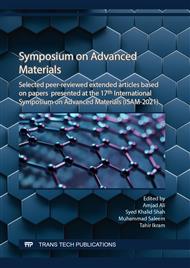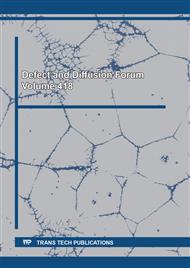p.109
p.119
p.131
p.137
p.145
p.153
p.161
p.169
p.179
Impurity Driven Embrittlement in AISI 1020 Steel during Thermal Treatments
Abstract:
One of the prime mechanical properties of any steel is impact strength, which may change dramatically due to the thermal treatments. The present investigation covers the influence of different thermally treated conditions on the impact strength of AISI 1020 steel. The thermal conditions included are: as rolled, oil quenched & tempered, air quenched, normalized and annealed condition. To evaluate the characteristics of the steel in different thermal conditions; optical microscopy, scanning electron microscopy, hardness testing and room temperature impact testing were carried out. Experimental results elaborated the existence of a narrow temperature range (250 ± 50 °C), which may decrease the impact strength drastically, when the steel is heat treated. In this temperature range toughness scavengers i.e., As, S, Sb etc. are precipitated on the grain boundary, which cause the noticeable decrease in impact strength. Optimum impact strength could be achievable where this critical temperature range was avoided.
Info:
Periodical:
Pages:
153-159
Citation:
Online since:
August 2022
Authors:
Keywords:
Price:
Сopyright:
© 2022 Trans Tech Publications Ltd. All Rights Reserved
Share:
Citation:



